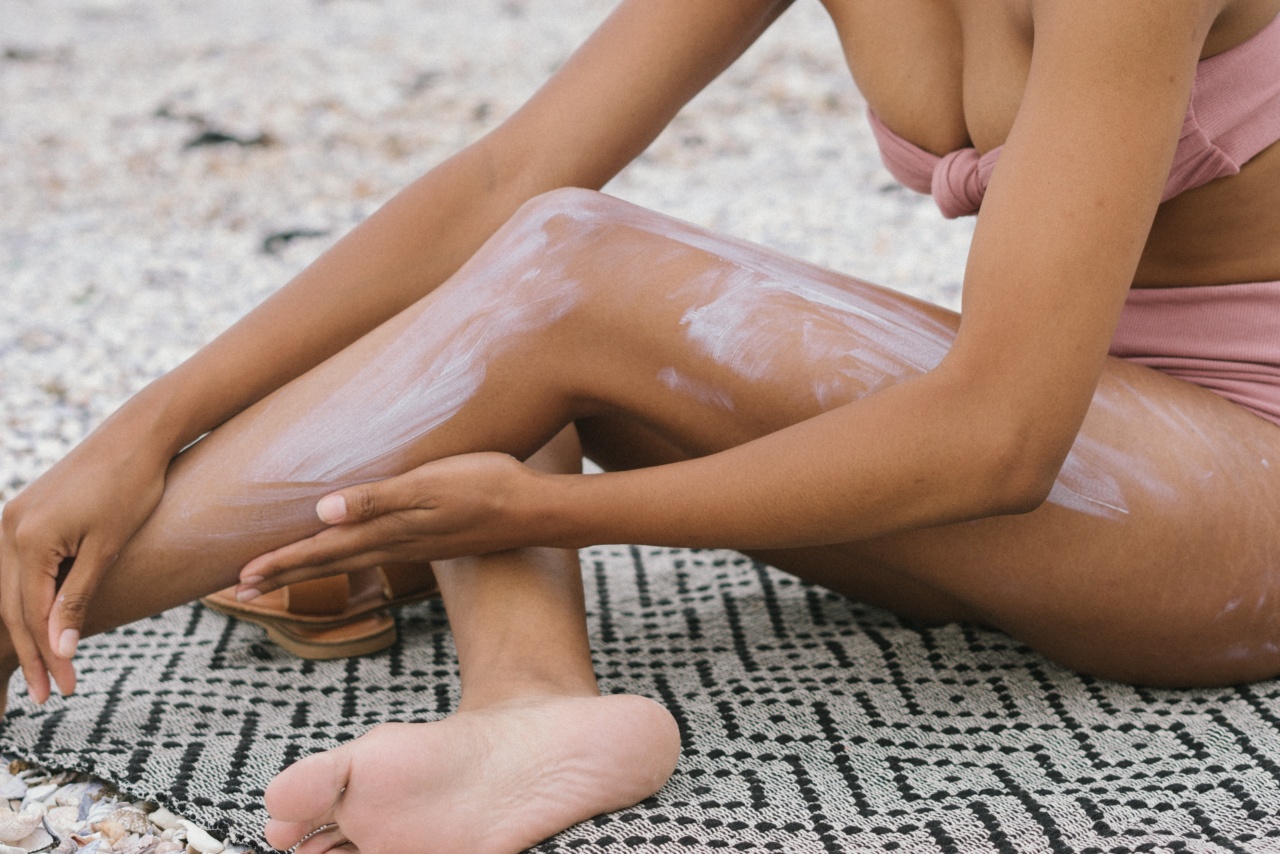Sunscreen is an essential product for protecting our skin from the harmful effects of UV (ultraviolet) rays. It acts as a shield, absorbing or reflecting the sun’s radiation and preventing it from damaging our skin cells.
While applying sunscreen once can provide some level of protection, it is crucial to reapply it frequently to maintain its efficacy. In this article, we will delve deeper into why we need to reapply sunscreen regularly, the factors affecting its effectiveness, and the optimal frequency for reapplication.
How does sunscreen work?
Before we understand why reapplication is necessary, let us first grasp how sunscreen works to protect our skin. Sunscreen contains active ingredients that act as filters.
They either absorb or reflect the harmful UV rays, preventing them from penetrating the skin. Broadly, sunscreens can be categorized into two types – physical and chemical sunscreens.
Physical Sunscreen
Physical sunscreens contain mineral-based ingredients like titanium dioxide and zinc oxide. These minerals form a protective layer on the skin’s surface, reflecting both UVA and UVB rays.
As soon as you apply physical sunscreen, it starts working by deflecting or scattering the sun’s radiation, serving as a physical barrier.
Chemical Sunscreen
Chemical sunscreens, on the other hand, consist of various organic compounds like avobenzone, octisalate, and oxybenzone.
These compounds absorb UV rays and undergo a chemical reaction, converting the sun’s energy into heat and then releasing it from the skin. Chemical sunscreens are often transparent and offer broad-spectrum protection against both UVA and UVB rays.
Factors affecting the effectiveness of sunscreen
Now that we understand how sunscreen works, it is important to realize that certain factors can affect its effectiveness. By being aware of these factors, we can take the necessary precautions and reapply sunscreen accordingly.
1. Time and Exposure
The first factor is the amount of time spent under the sun and the degree of exposure. Sunscreen tends to wear off gradually due to factors such as sweating, friction from clothes or towels, or simply wiping our face.
Therefore, if you are spending an extended period outdoors, it is crucial to reapply sunscreen to ensure continuous protection.
2. Sun Protection Factor (SPF)
Another significant factor is the Sun Protection Factor (SPF) indicated on the sunscreen packaging. SPF denotes the product’s ability to shield against UVB rays, which cause sunburns.
However, it is important to note that SPF does not measure protection against UVA rays, which can cause long-term skin damage. The higher the SPF value, the longer the protection lasts, but it does not imply that the sunscreen does not need to be reapplied.
3. Water and Sweat Resistance
Sunscreen products often claim to be water and sweat-resistant. While these claims have some validity, it’s important to understand that they do not provide full and indefinite protection.
Water and sweat resistance usually last for a specific duration, after which the sunscreen may start to wear off. Reapplication is necessary, especially after swimming or excessive sweating.
4. Medications and Skincare Products
Certain medications and skincare products can increase sun sensitivity. Some common medications like antibiotics, acne treatments, and diuretics can make your skin more prone to sunburn.
In addition, skincare products like exfoliants or retinoids may make your skin more sensitive to the sun. If you are using any such products, reapplying sunscreen becomes even more crucial.
5. Reflective Surfaces
Surfaces such as water, sand, and snow can reflect up to 80% of UV radiation, intensifying our exposure.
If you are near these reflective surfaces, it is essential to reapply sunscreen frequently as the reflected rays can reach your skin from various angles.
The ideal frequency for reapplying sunscreen
Now that we have discussed the factors that impact sunscreen effectiveness, it’s important to know the ideal frequency for reapplying sunscreen to ensure maximum protection.
Dermatologists recommend reapplying sunscreen every two hours when outdoors. However, this frequency may vary depending on certain situations.
1. Intense Sun Exposure
If you are participating in outdoor activities that involve intense sun exposure, such as hiking, swimming, or playing sports, it is advisable to reapply sunscreen more frequently.
In such situations, consider reapplying every 40-80 minutes, depending on your activity level and the factors mentioned above.
2. Direct Sun Between 10 am and 4 pm
The sun’s rays are the strongest between 10 am and 4 pm. During these hours, the intensity of UV rays is high, increasing the risk of sunburn and long-term skin damage.
It is crucial to apply and reapply sunscreen more frequently during this period to protect your skin adequately.
3. Extended Outdoor Time
If you are spending an extended period outdoors, especially during sunny days, it is important to reapply sunscreen at regular intervals. Remember that continuous exposure to the sun can cause sunburn and increase the risk of skin cancer.
Prioritize applying and reapplying sunscreen every two hours in such situations.
4. Sweating and Swimming
Participating in activities that make you sweat or swimming can reduce sunscreen effectiveness. Be sure to choose water-resistant sunscreens and reapply them after exiting the water or drying off.
This ensures that you maintain optimal protection even during these activities.
It is crucial to remember that everyone’s skin is different, and while these guidelines provide a general overview, understanding your own skin’s needs is equally important.
If you have fair or sensitive skin, a history of sunburn, or a family history of skin cancer, you may need to be extra cautious and reapply sunscreen more frequently.
In conclusion
Reapplying sunscreen frequently is necessary to protect our skin from harmful UV rays and prevent sunburns and long-term skin damage.
While sunscreen acts as a shield against the sun’s radiation, factors such as time and exposure, sunscreen type and SPF, water and sweat resistance, medications and skincare products, and reflective surfaces can diminish its effectiveness. Following dermatological guidelines, reapplying sunscreen every two hours when outdoors helps to maintain optimal protection.
However, it is important to assess individual factors like intense sun exposure, direct sun between 10 am and 4 pm, extended outdoor time, and sweating or swimming to adjust the frequency of reapplication accordingly. By prioritizing regular sunscreen use and frequent reapplication, you can ensure the well-being of your skin and minimize the risk of sunburns and skin damage in the long run.
























